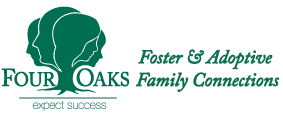Do you know what “TPR” or “subsidized adoption” means? Here’s your guide to frequently used terms in foster care, adoption and human services:
Abuse is harm inflicted on a person through physical, verbal, emotional or sexual actions that cause the victim to develop emotional or behavioral problems. Therapy may be needed to work through abuse issues.
A reaction to a stressful event or situation, usually beginning within three months and ending six months after the event’s end. Adjustment disorders are very common and can affect anyone, regardless of gender, age, race, or lifestyle. An adjustment disorder occurs when someone struggles to cope with a stressful event and develops emotional or behavioral problems.
A condition characterized by an inability to develop significant connections with other people. Children who have been abused and/or neglected may find it difficult to form significant ties. Signs of attachment disorder include difficulty in maintaining eye contact, lying, and not responding to affection.
A lifelong developmental disorder including problems with attention span, impulse control, and activity level. Typical behaviors include squirming; difficulty remaining seated when required; distractibility; difficulty staying on task; difficulty playing quietly; inattention; and engaging in physically dangerous activities without considering the consequences.
Behavioral health intervention services (BHIS) are an in-home service that helps children with a mental health diagnosis build skills in areas such as coping, anger management, socialization or healthy decision-making. This service is provided at no cost for children with Title 19 Medicaid insurance and is provided by human services provider agencies.
A complicated group of behavioral and emotional problems in children or adolescents. They may have great difficulty following the rules and behaving in a socially acceptable way.
Delays in a child’s developmental progress as measured against other children’s development of skills (sitting up, walking, toilet training, talking, etc.) at the same time.
In-home services are provided to families who have experienced an allegation of child abuse. They provide Evidenced Based Programming to clients we serve including: Solution-Based Casework, SafeCare and Motivational Interviewing.
Children with FAS can have serious life-long disabilities such as mental retardation, learning disabilities, and behavior problems.
Fictive kin means a person who is unrelated to a child by blood, adoption, or marriage, but who has an emotionally significant relationship with the child or the child’s family.
The final legal step in the adoption process, involving a court hearing where the adoptive parents become a child’s legal parent(s).
Foster care is the temporary placement of children and youth with families outside of their own home due to child abuse or neglect or other family crisis situations. The goal is to provide a safe, stable and nurturing environment.
The Iowa Department of Health and Human Services works to help individuals and families achieve safe, stable, self-sufficient and healthy lives, thereby contributing to the economic growth of the state. (www.dhs.state.ia.us)
In-depth evaluation of a family to determine their ability to provide services to a child. The study includes the physical environment, background checks, and the family’s background, current relationships, stability, resiliency, ability to cope, and empathy perception.
The Iowa Foster and Adoptive Parents Association advocates for and serves foster and adoptive families in Iowa. (www.ifapa.org)
Kinship caregiver” means a person to whom a child is related by blood, marriage, or adoption, or a person who has a significant, committed, positive relationship with the child removed from the home needing a place to live.
National Training and Development Curriculum is a 33-hour pre-service training completed in eleven classes that helps prepare prospective foster parents for foster care.
A disorder characterized by behavior, such as a temper, a tendency to argue with adults, refusal to obey adult requests, deliberate annoyance of others, spiteful and vindictive behavior, use of obscene language, or a tendency to blame others for mistakes.
The live session (virtual or in person) that provides information about foster care and adoption to interested families
A 24-hour substitute care outside of the child’s home in pre-adoptive homes, relative foster homes, non-relative foster homes, group homes, institutions and supervised independent living situations.
A structured plan designed to ensure that a child establishes safe, lasting and loving family relationships that are expected to last a lifetime.
A structured 24-hour facility with staff providing psychiatric and medical care to children who have not improved at other levels of care.
A syndrome sparked by traumatic past events where the person emotionally re-lives past traumas and becomes withdrawn from current events. Symptoms might include sleeping problems, nightmares, intrusive thoughts, and difficulty with concentrating.
A structured 24-hour care facility with staff that provides therapy to help severely trouble children overcome behavioral or emotional problems that adversely affect relationships.
A general term to indicate that a family is licensed for foster care and also approved for adoption. In providing foster care, a resource family provides support to a child’s birth family.
When a birth family is no longer in crisis and able to provide a safe and stable home for their child who has been in foster care.
“Special needs” in the world of foster care adoption generally refers to children who are more difficult to place because they have challenging behaviors, a disability, are older, are part of a sibling group.
The legal process of taking away the parental rights of a parent who has abandoned a child, failed to support a child without just cause, participated in the neglect and abuse of a child, or who is unable to provide care during a child’s formative years due to extended incarceration. If rights of both parents are severed, the child will become available for adoption.
